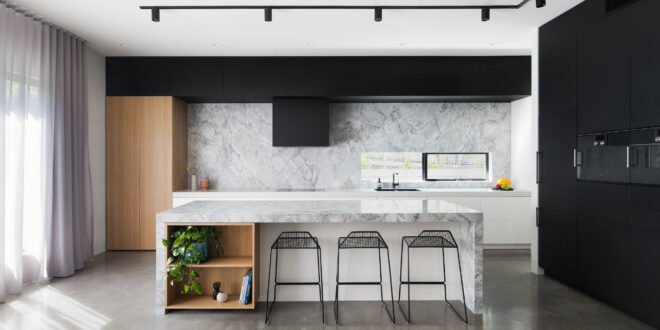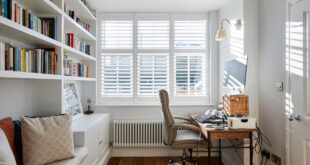Patterned Concrete Floors: The Kitchen’s Unsung Hero
When it comes to kitchen flooring, we often think of classic options like tile, hardwood, or vinyl. But have you ever considered the remarkable potential of patterned concrete? It’s more than just a gray slab; it’s a canvas for creativity, a testament to durability, and a surprisingly stylish choice for the heart of your home.
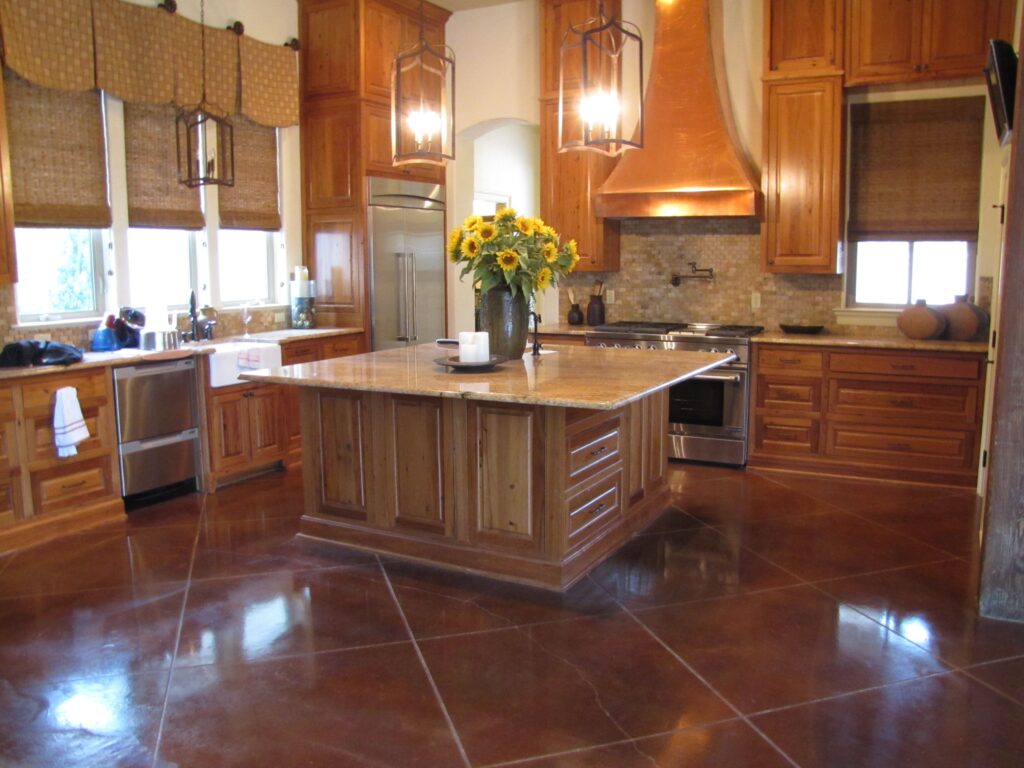
Patterned concrete floors are gaining immense popularity, and for good reason. They offer a unique blend of aesthetic appeal, resilience, and design flexibility that few other materials can match. In the kitchen, where style meets spills and high traffic is the norm, patterned concrete stands as a formidable and fashionable contender.
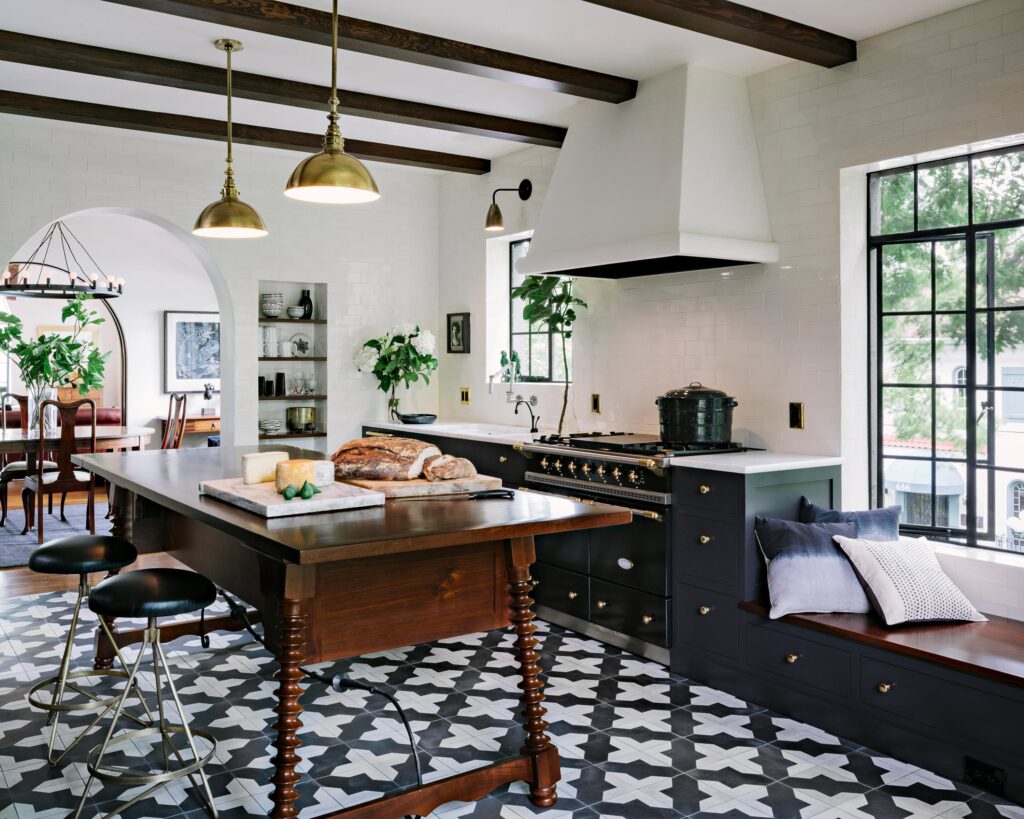
Why Choose Patterned Concrete for Your Kitchen Floor?
Before we dive into the dazzling array of patterns and designs, let’s explore the compelling reasons why patterned concrete might be the perfect choice for your kitchen:
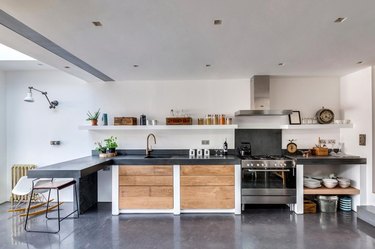
- Durability Beyond Compare: Concrete is renowned for its strength. It can withstand the daily wear and tear of a busy kitchen, resisting scratches, dents, and stains far better than many other flooring materials. Say goodbye to worrying about dropped pots or spilled sauces!
- A Design Playground: The possibilities are virtually endless. From intricate stencils and stamped textures to dyed hues and custom engravings, patterned concrete allows you to create a truly personalized kitchen floor that reflects your unique style.
- Low Maintenance Marvel: Forget about constant polishing or meticulous cleaning routines. Sealed concrete is remarkably easy to maintain. Regular sweeping and occasional mopping are usually all it takes to keep your floor looking its best.
- Cost-Effective Charm: While the initial investment might be slightly higher than some budget options, the long-term cost-effectiveness of concrete is undeniable. Its durability reduces the need for frequent repairs or replacements, saving you money in the long run.
- Hypoallergenic Haven: Unlike carpets or some types of tile, concrete doesn’t harbor dust mites or allergens. This makes it a great choice for allergy sufferers, promoting a healthier indoor environment.
- Thermal Mass Advantage: Concrete has excellent thermal mass, meaning it can absorb and store heat. This can help regulate the temperature in your kitchen, keeping it cooler in the summer and warmer in the winter, potentially reducing your energy bills.
- Seamless Style: Concrete floors can be installed seamlessly, eliminating grout lines that can trap dirt and grime. This not only enhances the aesthetic appeal but also makes cleaning even easier.
Exploring the World of Patterned Concrete Designs
Now, let’s get to the fun part: the patterns! The sheer variety of designs available for patterned concrete floors is truly astounding. Here are some of the most popular and inspiring options:
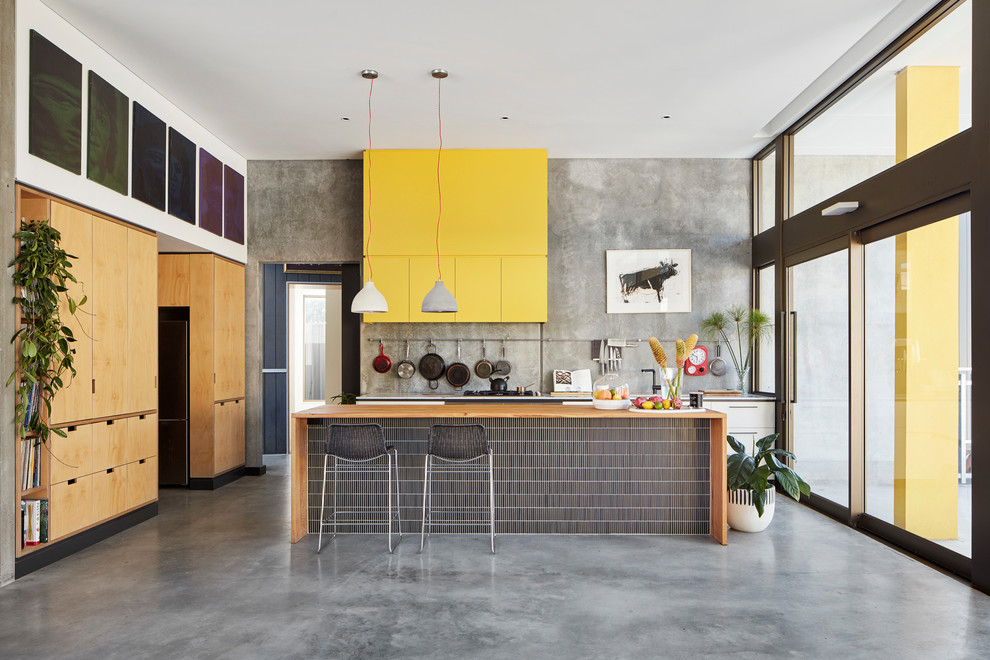
Stamped Concrete: Texture and Dimension
Stamped concrete involves using rubber stamps to imprint patterns onto the surface of freshly poured concrete. This technique allows you to replicate the look of natural stone, brick, tile, or even wood, at a fraction of the cost.
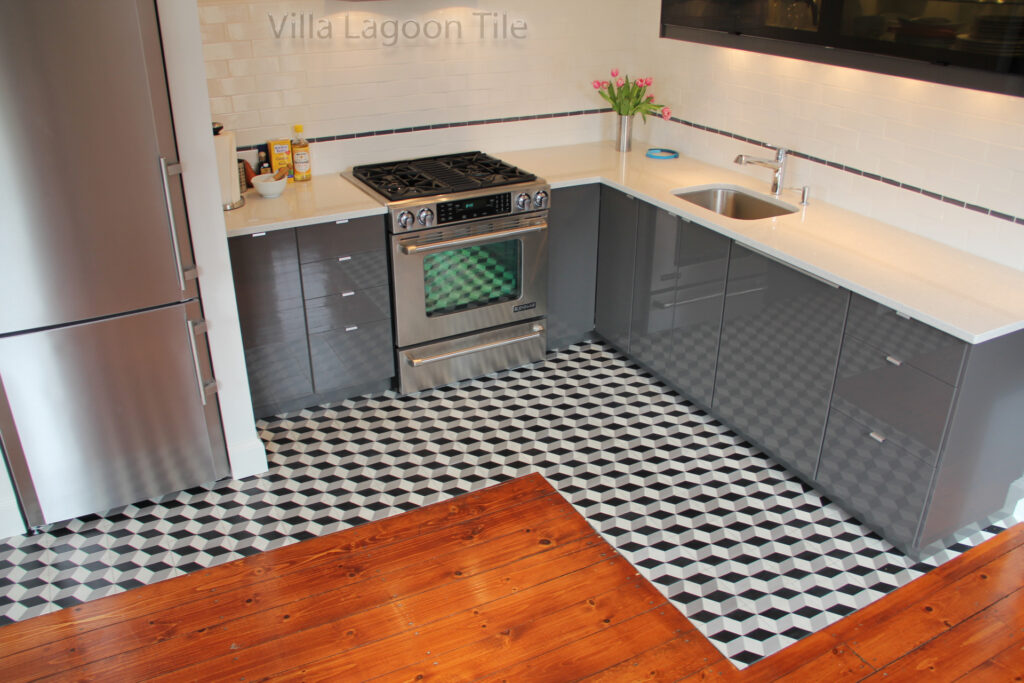
- Brick Patterns: Create a rustic and charming kitchen with a stamped brick pattern. This classic design adds warmth and character to any space.
- Stone Textures: Mimic the natural beauty of slate, flagstone, or cobblestone with realistic stone textures. These patterns can add a touch of elegance and sophistication to your kitchen.
- Wood Grain: Achieve the look of hardwood floors without the maintenance concerns. Stamped concrete can be textured to resemble various wood grains, adding warmth and texture to your kitchen.
- Geometric Designs: For a more modern and contemporary look, consider geometric patterns like squares, diamonds, or hexagons. These designs can add a touch of visual interest and create a unique focal point in your kitchen.
Stenciled Concrete: Precision and Artistry
Stenciled concrete involves using stencils to create intricate patterns on the surface of the concrete. This technique allows for precise and detailed designs, adding a touch of artistry to your kitchen floor.
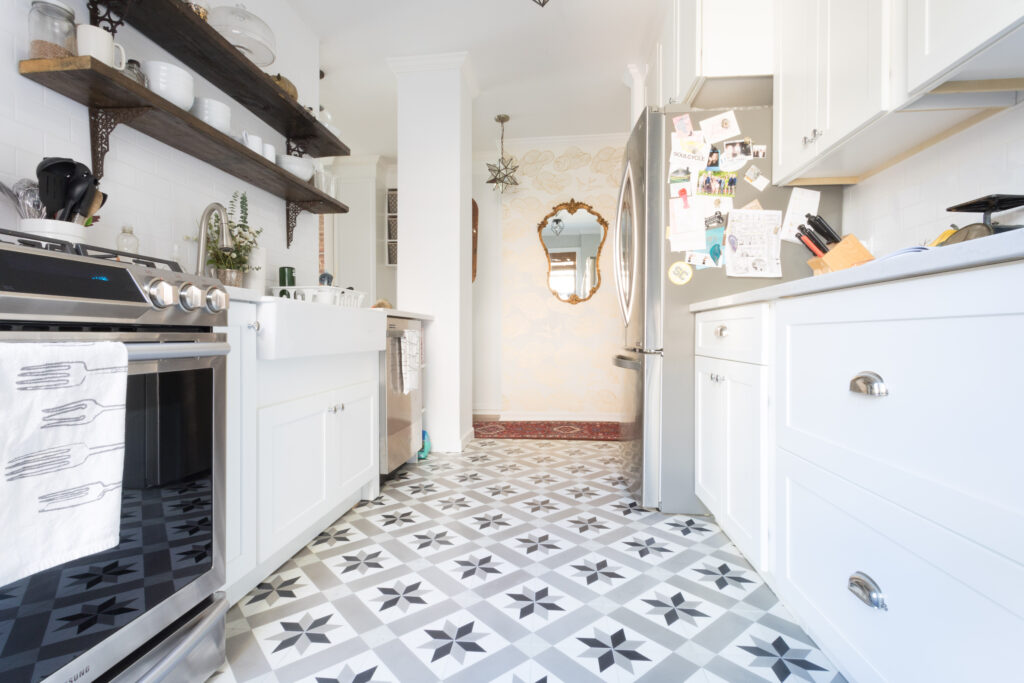
- Moroccan Tiles: Add a touch of exotic flair to your kitchen with stenciled Moroccan tile patterns. These intricate designs can create a vibrant and visually stunning space.
- Floral Motifs: Bring the beauty of nature indoors with stenciled floral motifs. These delicate designs can add a touch of elegance and romance to your kitchen.
- Geometric Abstracts: Create a modern and edgy look with stenciled geometric abstract patterns. These designs can add a touch of visual interest and create a unique focal point in your kitchen.
- Custom Designs: With stenciled concrete, you can even create custom designs that are tailored to your specific tastes and preferences. This allows you to create a truly one-of-a-kind kitchen floor.
Engraved Concrete: Timeless Elegance
Engraved concrete involves using specialized tools to carve patterns into the surface of the concrete. This technique creates a permanent and durable design that adds a touch of timeless elegance to your kitchen floor.
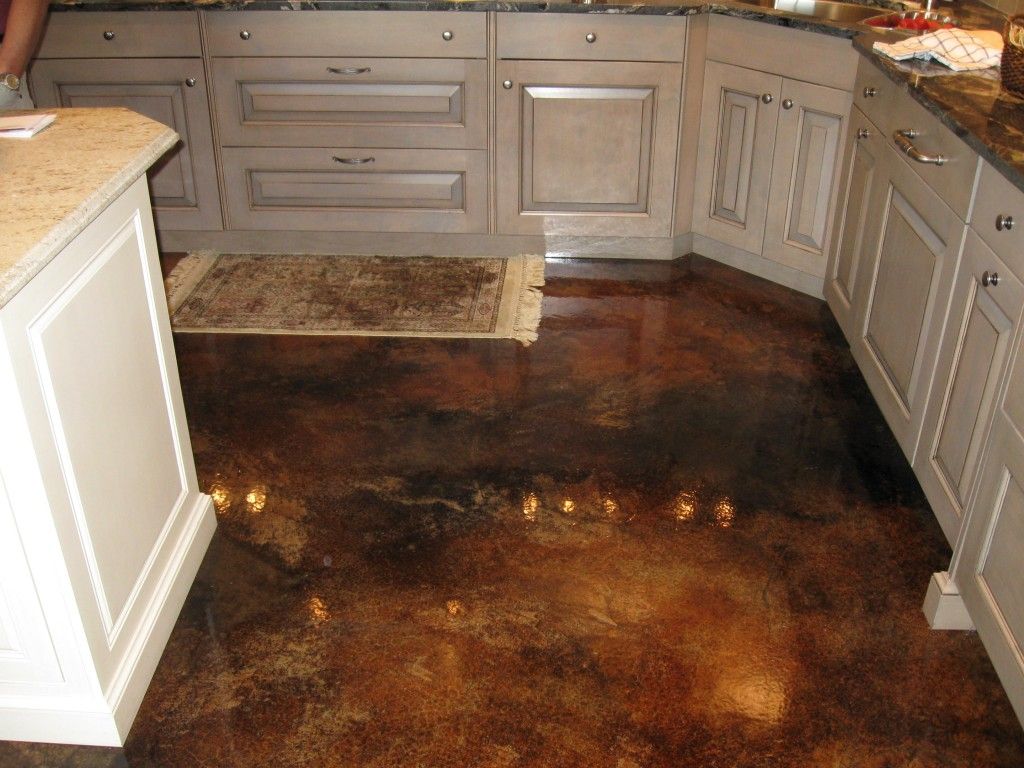
- Border Patterns: Define the perimeter of your kitchen with engraved border patterns. These designs can add a touch of sophistication and create a visual frame for your space.
- Medallion Designs: Create a focal point in your kitchen with an engraved medallion design. These intricate patterns can add a touch of grandeur and elegance to your space.
- Linear Patterns: Add a touch of visual interest with engraved linear patterns. These simple yet effective designs can create a sense of movement and direction in your kitchen.
- Custom Logos: For a truly personalized touch, consider engraving your family crest or a custom logo into your kitchen floor. This adds a unique and meaningful element to your space.
Dyed Concrete: A Spectrum of Colors
Dyeing concrete involves using acid-based or water-based dyes to add color to the concrete. This technique allows you to create a wide range of hues, from subtle earth tones to vibrant pops of color.
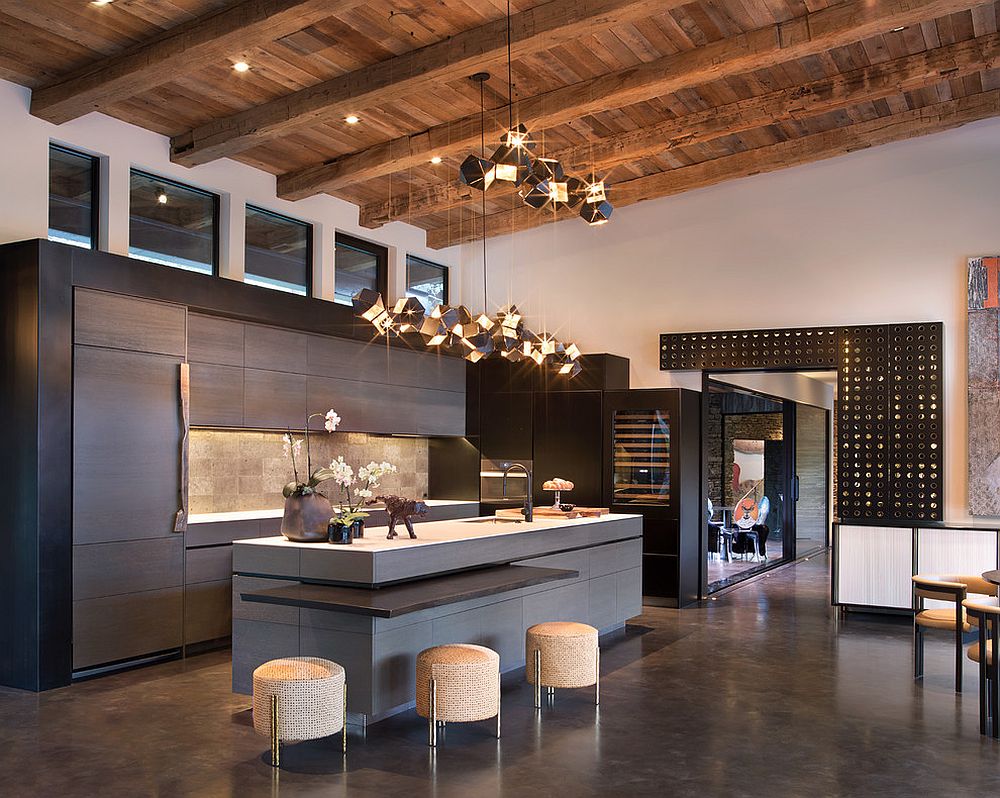
- Neutral Tones: Create a calming and inviting kitchen with neutral tones like beige, gray, or cream. These colors provide a versatile backdrop for any style of décor.
- Warm Earth Tones: Add warmth and richness to your kitchen with earth tones like terracotta, brown, or olive green. These colors create a cozy and inviting atmosphere.
- Cool Blues and Greens: Create a refreshing and relaxing kitchen with cool blues and greens. These colors evoke a sense of tranquility and serenity.
- Vibrant Accents: Add a touch of personality with vibrant accent colors like red, yellow, or orange. These colors can be used to highlight specific areas or create a bold statement.
Polished Concrete: Sleek and Modern
Polished concrete involves grinding and polishing the surface of the concrete to create a smooth, glossy finish. This technique creates a sleek and modern look that is perfect for contemporary kitchens.
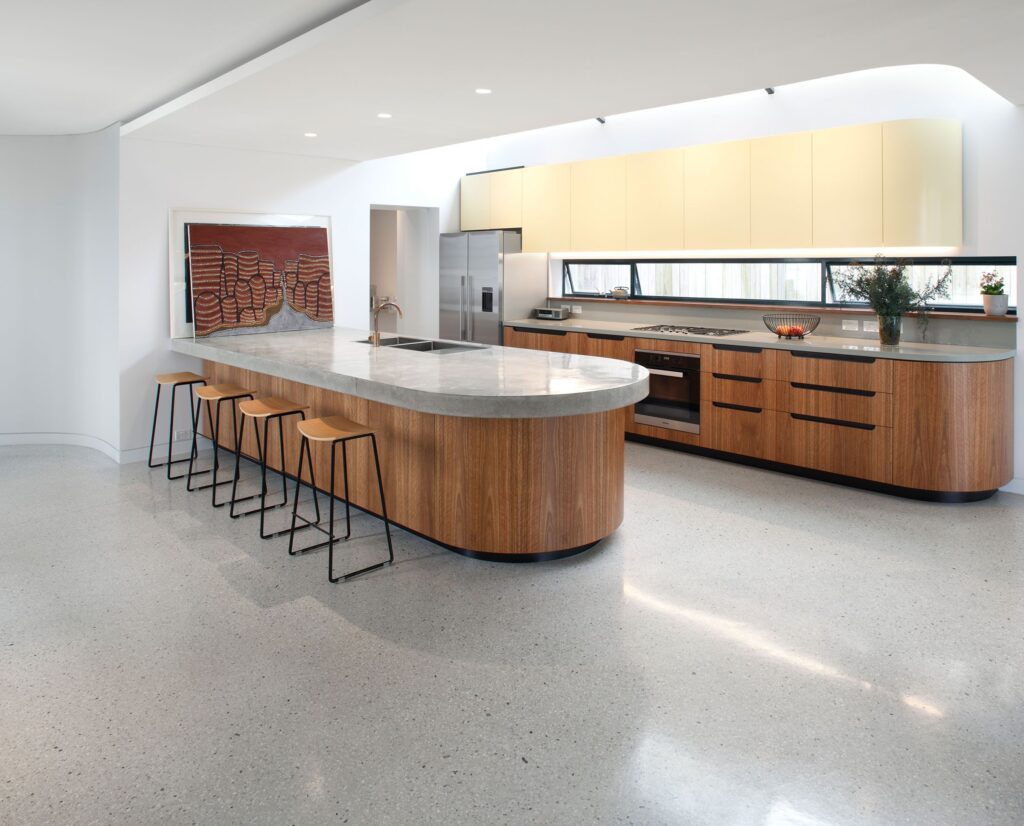
- High-Gloss Finish: Achieve a mirror-like shine with a high-gloss polished concrete floor. This finish reflects light beautifully and creates a sense of spaciousness.
- Satin Finish: Opt for a more subtle sheen with a satin finish. This finish provides a smooth and elegant look without being overly reflective.
- Exposed Aggregate: Reveal the natural beauty of the concrete by exposing the aggregate during the polishing process. This creates a unique and textured look.
- Dyed and Polished: Combine dyeing and polishing techniques to create a custom-colored and highly polished concrete floor that is truly one-of-a-kind.
The Installation Process: What to Expect
While DIY concrete projects are possible, especially with smaller areas, patterned concrete floor installation is best left to the professionals. Here’s a general overview of what you can expect during the process:
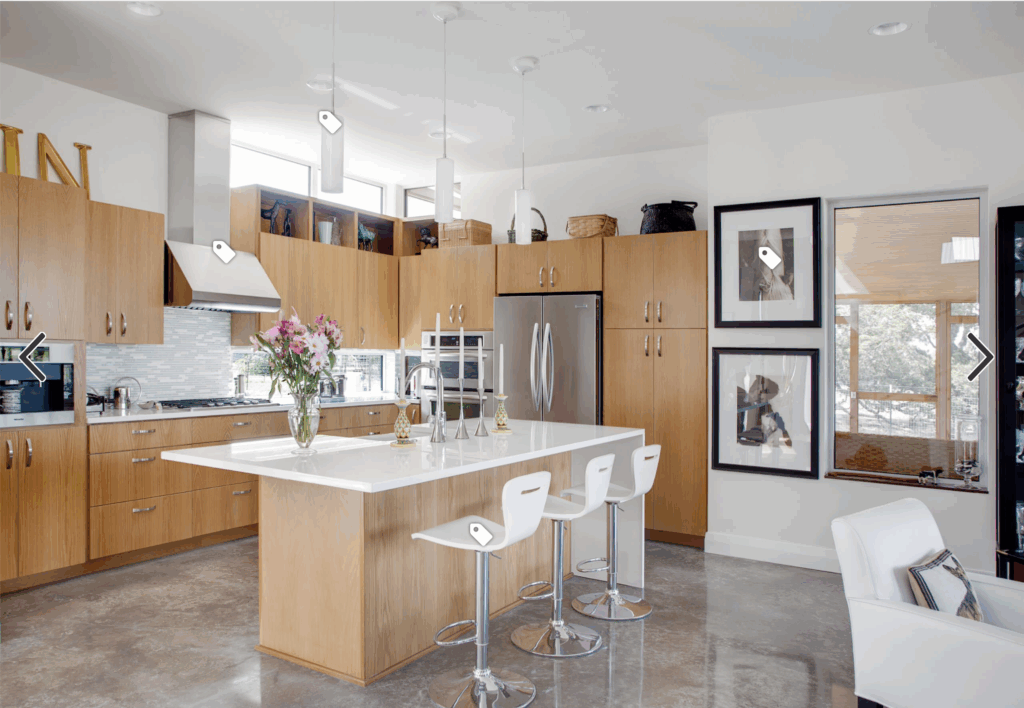
- Preparation: The existing floor will need to be properly prepared. This may involve removing old flooring, cleaning the surface, and leveling any imperfections.
- Pouring and Leveling: Fresh concrete is poured and carefully leveled to ensure a smooth and even surface.
- Patterning: Depending on the chosen technique (stamping, stenciling, engraving), the patterns are applied to the wet or cured concrete.
- Curing: The concrete needs time to cure properly, which can take several days. This is crucial for its strength and durability.
- Sealing: A sealant is applied to protect the concrete from stains, moisture, and wear. This also enhances the color and appearance of the floor.
Maintenance Tips for Long-Lasting Beauty
Once your patterned concrete floor is installed, proper maintenance is essential to keep it looking its best for years to come. Here are some simple tips:
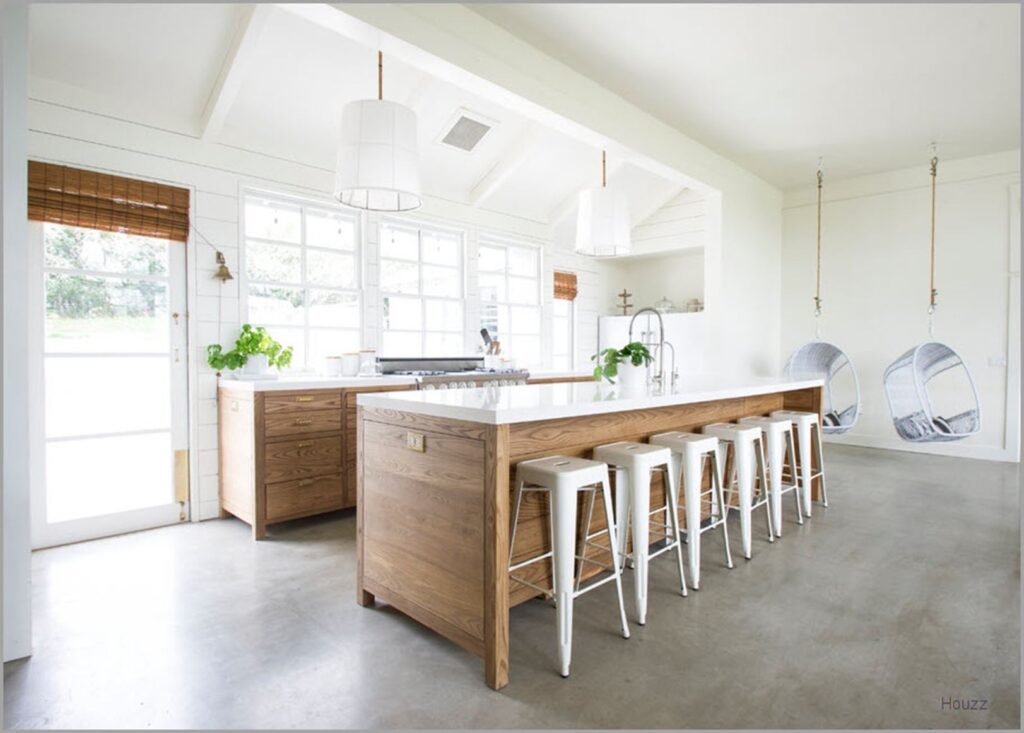
- Regular Sweeping or Vacuuming: Remove dirt and debris regularly to prevent scratching.
- Mopping with a Mild Detergent: Use a pH-neutral cleaner specifically designed for concrete floors. Avoid harsh chemicals or abrasive cleaners.
- Promptly Clean Spills: Wipe up spills immediately to prevent staining.
- Use Protective Mats: Place mats at entrances and in high-traffic areas to minimize wear and tear.
- Reapply Sealant: Depending on the type of sealant used, it may need to be reapplied every few years to maintain its protective properties.
The Cost Factor: Is Patterned Concrete Affordable?
The cost of patterned concrete floors can vary depending on several factors, including:

- The complexity of the design
- The size of the area
- The type of concrete used
- The labor costs in your area
Generally, patterned concrete is more expensive than basic concrete flooring but can be comparable to or even less expensive than high-end tile or hardwood. It’s important to get quotes from several contractors to compare prices and find the best value for your budget.
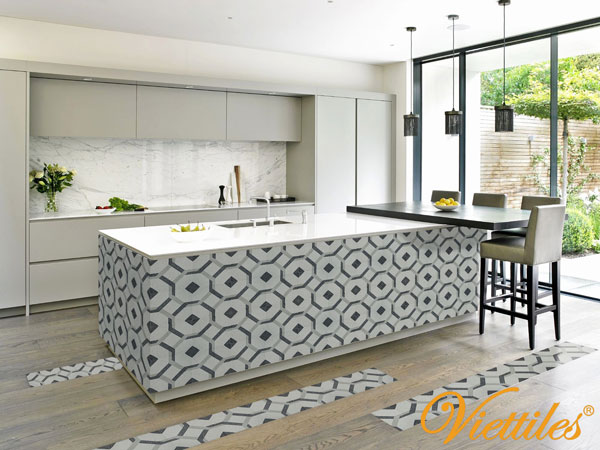
Finding the Right Contractor: Expertise Matters
Choosing the right contractor is crucial for a successful patterned concrete floor installation. Look for a contractor with experience in decorative concrete and a portfolio of successful projects. Ask for references and check online reviews to get a sense of their reputation and quality of work. A reputable contractor will be able to guide you through the design process, explain the installation process in detail, and provide you with a clear and accurate estimate.
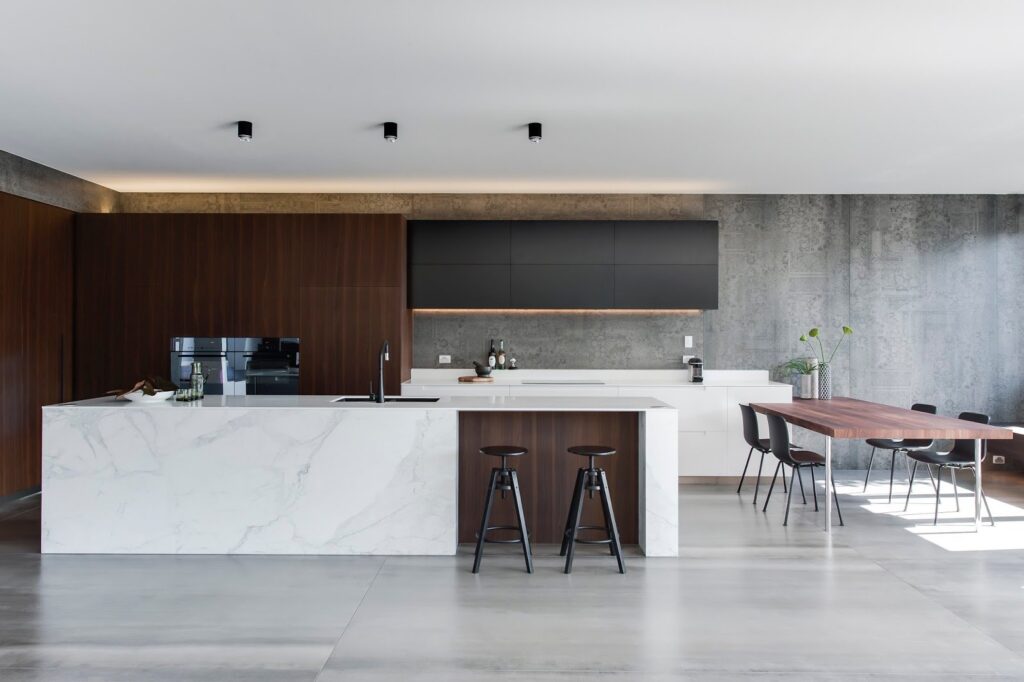
Patterned Concrete: A Sustainable Choice
In addition to its aesthetic and practical benefits, patterned concrete can also be a sustainable flooring choice. Concrete is a durable and long-lasting material, which reduces the need for frequent replacements. It can also be made with recycled materials, such as fly ash or slag, further reducing its environmental impact. Furthermore, concrete’s thermal mass properties can help reduce energy consumption, making it a more sustainable option overall.
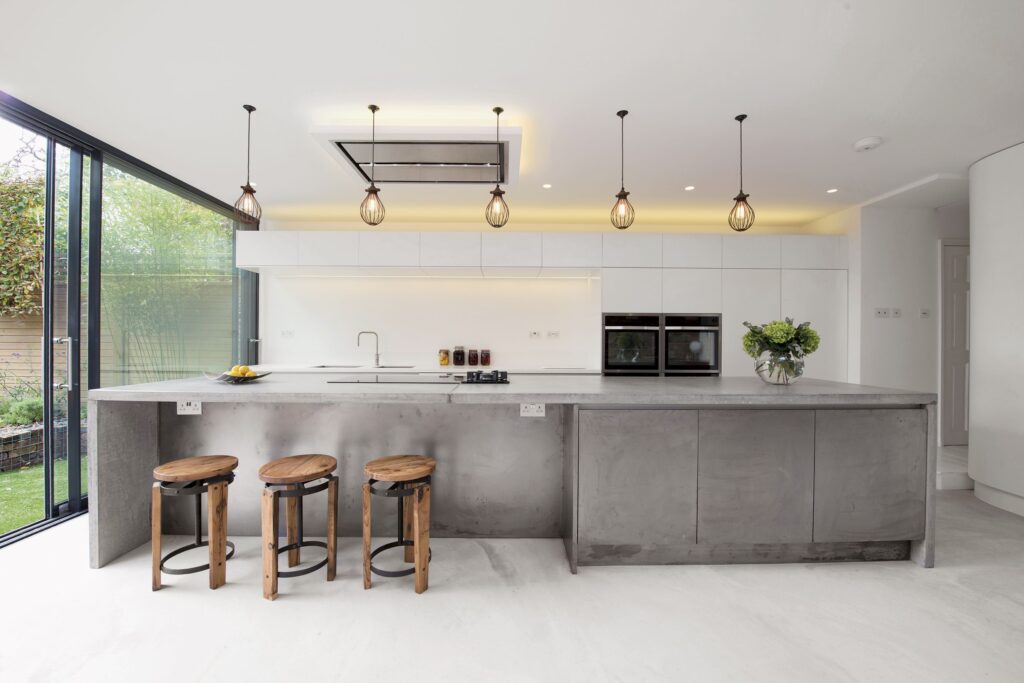
Beyond the Floor: Concrete’s Versatility in the Kitchen
While we’ve focused on flooring, don’t forget that concrete’s versatility extends beyond the floor. Consider incorporating concrete into other kitchen elements:

- Concrete Countertops: Durable, stylish, and customizable.
- Concrete Backsplashes: Add texture and visual interest.
- Concrete Sinks: A unique and modern touch.
In Conclusion: A Stylish and Smart Investment
Patterned concrete floors offer a winning combination of style, durability, and design flexibility, making them an excellent choice for the kitchen. From stamped textures to stenciled designs, the possibilities are endless. With proper installation and maintenance, a patterned concrete floor can transform your kitchen into a beautiful and functional space that you’ll enjoy for many years to come. It’s an investment in your home’s value and your personal enjoyment, creating a kitchen that’s as unique and stylish as you are. So, ditch the ordinary and embrace the extraordinary potential of patterned concrete – your kitchen will thank you for it!
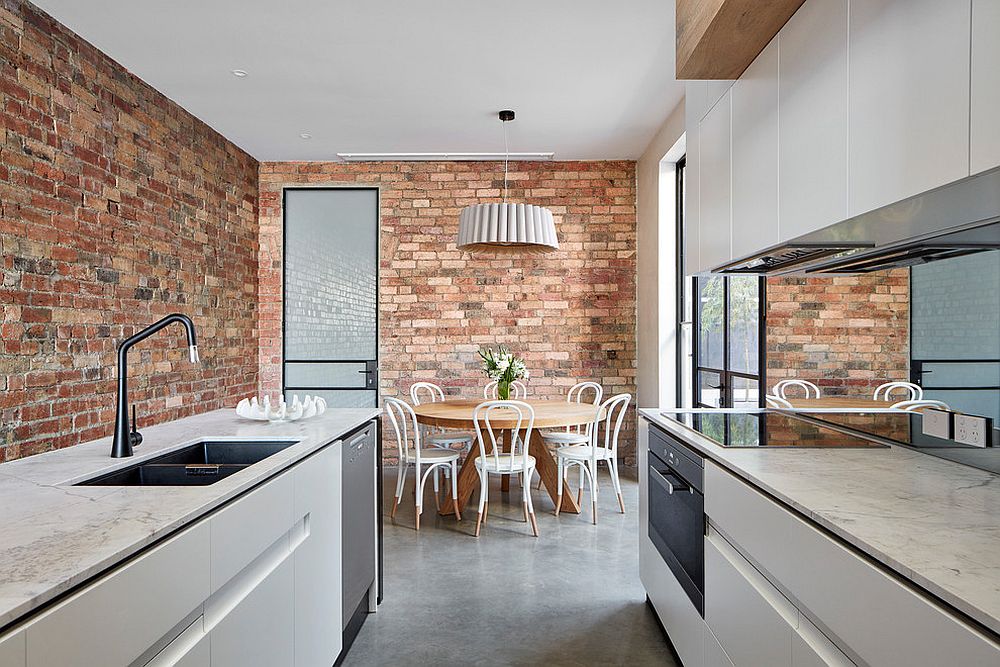
 Nimila
Nimila
